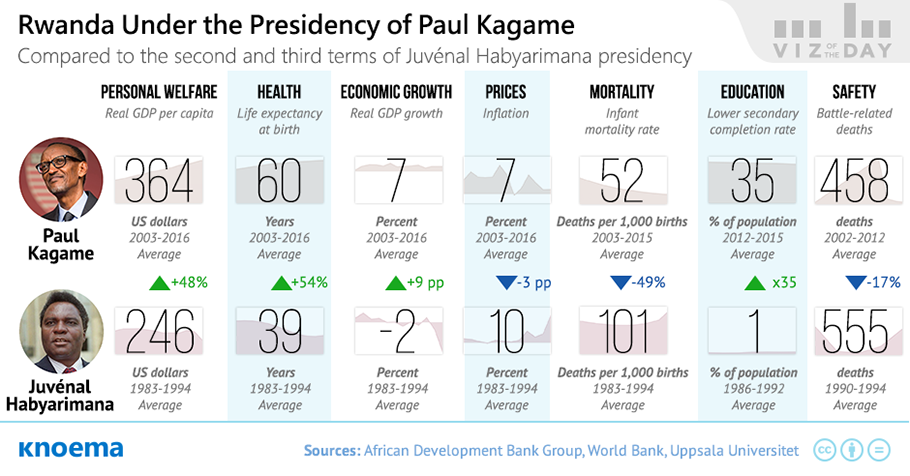On August 4, President Paul Kagame won election to serve a third consecutive seven-year term as president of Rwanda, a small African country with a population of 12 million. President Kagame first served as president in 2000 when his predecessor, Pasteur Bizimungu, resigned. Some consider him to be among the longest serving world leaders based on his initial service as Rwanda’s Vice President and Minister of Defence.
- A 2015 national referendum introduced a constitutional amendment that lifted the two-term limit on presidents of Rwanda, allowing Kagame to run for his third term.
- In a further proposed amendment directed specifically to Kagame, he could be eligible for two additional 5-year terms after his third term, extending his presidency to 2034.
Long-time presidencies are often associated with authoritarian regimes, repression of opposition, and single-party domination, among other democracy-weakening themes. Paul Kagame is not an exception. The international community has loudly criticized the president for silencing opposition and running a one-party state while simultaneously praising the sustainable economic growth and social development Rwanda has experienced under Kagame. Comparing performance among key development measures during the 12-year presidency of Juvénal Habyarimana (his second and the third terms) and the first 14-years of President Paul Kagame, progress across several spheres, including personal welfare, health, economic growth, education, and safety, is evident.
- While by the late 1990s Rwanda’s GDP per capita was trending downward, it rebounded under Kagame to increase by nearly 50 percent. Real GDP growth was also stable at around 7 percent compared to more volatile growth during the 1983-1994 period that averaged only -2 percent.
- Kagame also presided over a 53 percent growth in life expectancy at birth, a 50 percent decline in infant mortality, and education levels that soared from just 1 percent of the population to 35 percent.
- Where progress was not as significant is safety: though the average annual number of battle-related fatalities in armed conflicts decreased slightly, there were at least three years during which at least 1,000 lives were lost while Kagame led the country: 1998, 2001, and 2009.
Explore today’s visualizations to learn more about these and other economic and socio-demographic trends.
Материалы по теме
Kagame’s Rwanda | 2017
Until a few years, the ago Rwandan Constitution allowed presidents to seek only two terms in office, but according to the constitutional amendment in 2015, Paul Kagame could potentially remain in power until 2034. Under his leadership, rebels saved the country from genocide in 1994 during which more than 800,000 Tutsis and moderate Hutus were massacred by Hutu extremists. According to the Rwandan National Electoral Commission Twitter, President Kagame won more than 6.65 million votes in the August election, or approximately 98.6 percent of the voting population. Governance After the genocide, Rwanda needed to create strong governance...
Rwanda: Political Institutions and Development
For additional information on elections please visit each country's respective electoral commission web site: Rwanda - National Electoral Commission
